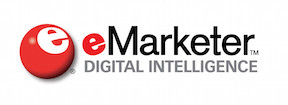
Publishings
Program Areas
-
Programmatic media-buying technologies are taking over the internet at a rapid pace, so much so that traditional offline media is the new frontier for the tech. Programmatic, digital out-of-home (DOOH) has been pioneered in APAC, and is now being exported around the globe. ExchangeWire charts is progress. The means of buying OOH media space using programmatic technology has been piloted in Australia for well over a year (link is external), and is about to be exported to other parts of the region; plus Europe is also on the roadmap with the launch date there imminent. The potential disruption of programmatic media trading will be discussed at next week’s ATS Singapore, during a panel session entitled ‘Joining the Dots – Why Programmatic Can Solve the Multi-Channel Conundrum’, where Vicki Lyon, Site Tour, CCO, will share her experience of rolling out the tech in Australia. Site Tour is part of a specialist consortium aimed at developing the opportunities in this space, along with IPG Mediabrands’ programmatic buying division Cadreon, plus Brandscreen, that has been running over 1,000 OOH screens that can display media traded using programmatic technologies. Site Tour, effectively an ad exchange, recently inked a contract with programmatic video advertising firm TubeMogul to allow advertisers to programmatically purchase video ads on billboards, kiosks, and elevator screens in Australia. The pairing has extended this relationship to the UK where they are imminently to launch the offering. ExchangeWire caught up with Site Tour’s Lyon (pictured) to learn more about the offering. Full article available at http://bit.ly/1UgdT9l (link is external)
-
The digital data “arms race” that is propelling major companies around the world to expand their data collection, consumer profiling, and online targeting capabilities illustrates how information from and about us drives the commercial (and increasingly political) marketplaces. Corporations want to know as much about us as possible—including how to influence us at any point in what they call (link is external) the “consumer journey.” Companies are significantly investing in sophisticated “data management platforms” that regularly gather and analyze our behaviors. Large amounts (link is external) of so-called first-, second-, and third-party data (information collated from their own files on us and amplified by additional files from numerous data brokers) are used to influence our online and offline experiences. Antitrust and merger regulators (link is external) have not kept up with how consumer data is being used today. It’s become a dynamic and critical factor, whose “actionabilty” (link is external) (the capacity to use our information both instantly and effectively) to influence the decision-making of both individuals and groups is crucial for competiveness. Companies are increasingly expanding their ability to effectively (link is external) track individuals and use that information (where are we online, what did we do, whom we communicate with, and what we read, buy, etc.). These practices illustrate how commercial surveillance has become a fundamental part of our lives today. But violating our privacy is just one key and disturbing dimension of this largely invisible data apparatus. Another is that data is used in new ways as part of a much more complex system that delivers influence and promotes behavioral changes. How data is used today to transform the consumer experience should be a focus of competition regulators. Merger reviews need to go beyond issues related to what price we may pay for a product to explore how data is and will be used to change our perceptions, relationships, and actions with items and brands. While advertisers and marketers have always been in the persuasion business, they’ve never before had the capabilities they have today—from neuromarketing to social media marketing to advanced data analytics used for targeting and much more. And nearly every day these companies advance the data-driven digital influence process. The very nature of contemporary media companies is all about using our information to drive consumer transactions, regardless of device and location. (See Google (link is external), Facebook (link is external), etc.). We still don’t know what the cumulative effect of all this will be, but our consumer-protection and competition regulators need to be on the cutting edge—not looking backward. Both the Department of Justice and the Federal Trade Commission need to stay abreast of how Big Data and the techniques tethered to it change the nature of markets. The approval (link is external) of Big (link is external) Data mergers (link is external) by the DoJ and the FTC without a thorough analysis and public accounting, illustrates that it’s time to reform the process. This is on the agenda of consumer advocates, including those working together across the Atlantic.
-
What is Adobe Audience Manager? It’s a data management platform that helps you build unique audience profiles so you can identify your most valuable segments and use them across any digital channel. Understand your audiences: Get a complete view of your audience by combining all of your data sources in one place. Create new segments: Continually discover and organize new, valuable segments for smarter targeting and personalization. Advertise effectively: Make your ad campaigns more productive by targeting specific segments on any platform. What can Audience Manager do? 360-degree profiles: Combine information from online, offline and second- and third-party sources to create complete audience profiles. Audience activation: Conveniently target specific profiles on any content delivery platform, like content management systems and ad servers. Cross-device measurement: Identify, measure and target people as they move across screens and devices. Look a-like modeling: Identify prospects who are similar in behavior to your most valuable customers, so you can extend your reach. Read more about Adobe Audience Manager at http://adobe.ly/1Cl5hc1 (link is external)
-
In case you missed it, we recently released a study showing the first holistic analysis of cross-platform digital media consumption in the U.S., entitled Digital Omnivores: How Tablets, Smartphones and Connected Devices are Changing U.S. Digital Media Consumption Habits (link is external). The study brings together insights from across the comScore mobile suite of products and provides a first look at survey-based behavioral data on tablet use. In the report, we explore the increasingly fragmented digital media landscape shaped by the widespread adoption of smartphones and entry of tablets and other web-enabled connected devices. As people become increasingly connected through the use of these devices, we are witnessing the transformation of consumers into digital omnivores able to engage seamlessly with a steady stream of digital content across different platforms. Below we will share with you a few key highlights of the broader trends we’re seeing, and tomorrow I’ll be conducting a webinar that will dive deeper into this topic. Below we will share with you a few key highlights of the broader trends we’re seeing, which I also presented at a recent comScore webinar on the topic. You can find the Digital Omnivores webinar presentation here (link is external). Digital Omnivores Are a Global Phenomenon An analysis of ten selected global markets in August 2011 showed a notable percentage of Internet traffic (measured as browser-based page views) coming from non-computer devices. Singapore led among those markets with more than 7 percent of all Internet traffic in the country coming from smartphones, tablets and other connected devices. While mobile phones continue to be the main driver of non-computer traffic around the world, it is interesting to see tablets contributing a sizeable amount of traffic for a few mature technological markets. In Canada, tablets drove nearly 40 percent of all non-computer traffic. Read more at http://bit.ly/1C7wYEG (link is external)
-
Blog
Acxiom Honored with 31 Industry Awards
The Company’s Digital Impact Division Takes Home 13 Internet Advertising Competition (IAC) Awards and 18 Communicator Awards
LITTLE ROCK, Ark.--(BUSINESS WIRE (link is external))--Acxiom® (NASDAQ: ACXM), an enterprise data, analytics and software-as-a-service company, today announced that its Digital Impact division, now Acxiom Impact™, has won 11 “Best of Industry” 2015 Internet Advertising Competition (link is external) Awards (IAC), and was the sole agency to win two “Best in Show” awards from the Web Marketing Association (link is external) at ad:tech San Francisco 2015. Acxiom Impact’s work was also recognized by the Academy of Interactive & Visual Arts (link is external) with 18 Communicator Awards -- three gold and 15 silver -- from a field of 6,000 entries that were submitted this season. Acxiom has recently relaunched Digital Impact (link is external), its email and cross-channel marketing business as Acxiom Impact, an advanced marketing offering specifically designed to meet the unique needs of sophisticated enterprise marketers. The new, upgraded Acxiom Impact platform offers a wide breadth of features including data-rich targeting and personalization, flexible analytics and reporting, cross-enterprise collaboration tools and cross-channel orchestration capabilities. As a recognized leader in client satisfaction and marketing services, Acxiom Impact provides a broad range of leading marketing services, including campaign operations, analytics, marketing strategy, technical solutions and award-winning creative. “The Acxiom Impact creative team has again displayed the power of their creative talents with impressive award wins across several different categories,” said David Bonalle, general manager at Acxiom Impact. “These awards highlight Acxiom’s dedication to redefining 1:1 marketing at scale for our clients and Acxiom Impact’s strength as a leading provider of email and customer marketing services.” Read more at http://bit.ly/1BXV70k (link is external) -
Despite struggles, marketers remain focused on improving big data (link is external), and those putting money toward such efforts are reaping the benefits. In April 2015 research by the Direct Marketing Association (link is external) and Winterberry Group (link is external), 43% of US marketing professionals said they expected their data-driven marketing (DDM) spending to be higher in Q2 2015 than Q1, and 60.2% of respondents expected DDM revenues to increase during the same period. However, June 2015 research by Econsultancy in association with Signal found that senior-level marketers in North America weren’t jumping for joy over returns from data-related marketing investments. Just over one-third said these had a strong positive impact. Promisingly, though, was that 47% said that they had some positive impact. Econsultancy suggested that first-party data could help the group reporting so-so results—along with the laggards, of course. When marketers were asked to compare different levels of data and their effect on desired outcomes, first-party data ranked highest across the board. It was most popular for gaining insight into customers, cited by 74% of respondents. More than six in 10 respondents also said it was the easiest to justify using, drove the highest increase in customer value and the highest campaign lift among data sources—all by a long shot. Read more at http://bit.ly/1IHPcJZ (link is external)
-
Blog
Can Mondelez, Facebook Sell More Cookies Online?
Snacks Giant and Social Network Reach Deal To Boost Video, E-commerce
Mondelez International has struck a new deal with Facebook that the Oreo maker says will help it crack the code for selling more cookies online. The pact renews a one-year global strategic partnership announced in March of 2014 that covered 52 countries and gave the snacks and candy marketer access to Facebook's beta testing programs. The new arrangement also covers 52 countries and will "focus on creating and delivering creative video content and driving impulse snack purchasing online," according to a statement issued on Tuesday. Mondelez declined to release terms of the new deal but a spokeswoman said it is "significantly larger" than last year's deal. The arrangement was brokered by Dentsu Aegis Media. Mondelez will get access to a full-time Facebook creative strategist that will work with the company and its agencies to develop "scalable video content natively for the platform to optimize social engagement," according to the announcement. Facebook will also give Mondelez access to beta-testing programs on Facebook and Instagram. Additionally, the two parties will work together to create ecommerce solutions to "drive impulse purchases" in markets including the U.S., Australia, India and U.K. Full article available at http://bit.ly/1QPZEJd (link is external) -
Blog
Facebook has been looking at an alternative to the 'Like' button
Reading your facial expressions and sending your friends an appropriate cartoon face.
Facebook has given us a bit more of an insight into some of the more experimental new products and apps its product team has been working on. Speaking at the Cannes Lions International Festival of Creativity, Facebook's chief product officer Chris Cox, showed off what could one day work as a more expressive version of the Like button. Instead of simply pressing Like, Cox said users could use their smartphones to take a selfie. But rather than just send that, the function could read the user's Facebook expression and transform it into an appropriate smiley/sad/frowning/indifferent face. Cox made it clear: "This is not on our roadmap, we don't know how to build this. It actually seems really hard, but it's the kind of thing unlocked by the power of all the different sensors on the phone." Read more at http://read.bi/1Ni1xJ5 (link is external) -
Delving deeper into ecommerce, Twitter is testing some new ways to help users discover products within its network. First up are dedicated pages, which will feature images and videos about products, alongside information such as a description, price and an option to buy, book, or visit a brand’s Web site for more information. Within users’ timelines, they can now expect to see pages and collections of pages that are shared by influencers and brands. In addition, Twitter is also beginning to test new ways for people and brands to create and share Twitter collections of products and places. Users can now browse collections from various influencers, and get more information about featured products and places. Already, there’s Nike’s LeBron Elite collection; Reese Witherspoon’s Draper James Summer Picks; The Ellen Show’s Best of The Ellen Shop and HBO's #GoT Fan Favorites. “This is just the beginning,” Amaryllis Fox, a product manager at Twitter, promises on a new blog post. “In the coming months we’ll be testing more new experiences we hope give you the most personalized and relevant information about the places and things you want to explore.” While Twitter struggles (link is external) with its direction, ecommerce appears to part of its broader ambitions. Among other efforts, the company has been inviting advertisers to create credit-card-connected promotions, and share them with users directly in their timelines. With their credit cards, users can redeem the new “Twitter Offers” in stores without the need for a coupon or numerical code. Full article available at http://bit.ly/1GuVHOT (link is external)
-
Blog
The First 5 Seconds: Creating YouTube Ads That Break Through in a Skippable World
Google's Art, Copy & Code team saw a similar result with its first Unskippable Labs experiment. The team created and tested three YouTube ads for Mountain Dew® Kickstart™ and one with a lighter brand touch in the first five seconds was skipped less on mobile.
Five, four, three, two, one. What keeps people watching after the first five seconds? What can science tell us about the art of video advertising? We took a peek behind the data curtain to see which creative choices capture audiences' attention. Online video ad formats like YouTube TrueView (link is external) ads have created a paradox for marketers. They remove traditional 30-second time constraints, giving brands more time to tell their stories. But introducing a "skip" button after five short seconds also means that advertisers have to create more engaging stories that not only grab their audience's attention, but hold it, too. Is it time to start creating ads with the "skip" button in mind? Today, all ads are skippable—whether it's a function of the format or not. People have been honing their skipping skills for a while. Think about it: Viewers experimented with fast-forwarding on their VCRs, improved their skills with DVRs, and now are mastering ad choice on the web. Even if there's no option to fast-forward or skip, consumers can always pick up a smartphone, switch tabs, or find other ways to hit a metaphoric skip button. Is it time to start creating ads with the 'skip' button in mind? Thousands of ads run on YouTube every day. So, when we look at that data in aggregate, what patterns emerge? What can we learn from existing video ads about creative that works in the first five seconds? To find the answer, we looked into thousands of TrueView ads across 16 countries and 11 verticals, categorizing them according to 170 creative attributes, including brand name mentions and featured celebrities. We used aggregated analytics from AdWords to see how long people watched without hitting the skip button. To measure brand awareness and ad recall (link is external), we took advantage of Google's Brand Lift (link is external). There are no "rules" for making ads people choose, but we did find that certain creative choices are associated with how long viewers watch or how well they remember ads on YouTube. Turns out, there is a certain science to the art of engaging video advertising. Here's what we've learned. Full article available at http://bit.ly/1FpaPg5 (link is external) -
We explore the task of recognizing peoples' identities in photo albums in an unconstrained setting. To facilitate this, we introduce the new People In Photo Albums (PIPA) dataset, consisting of over 60000 instances of over 2000 individuals collected from public Flickr photo albums. With only about half of the person images containing a frontal face, the recognition task is very challenging due to the large variations in pose, clothing, camera viewpoint, image resolution and illumination. We propose the Pose Invariant PErson Recognition (PIPER) method, which accumulates the cues of poselet-level person recognizers trained by deep convolutional networks to discount for the pose variations, combined with a face recognizer and a global recognizer. Experiments on three different settings confirm that in our unconstrained setup PIPER significantly improves on the performance of DeepFace, which is one of the best face recognizers as measured on the LFW dataset. More available at http://bit.ly/1N0RfwN (link is external)
-
Category: Media Idea Client: America’s Navy Agency: Lowe Campbell Ewald Title: Project Architeuthis: Engaging America's Cyber Warriors (link is external) The Project Architeuthis campaign from America’s Navy and Campbell Ewald proves that big results don’t always require big budgets. The initiative focused on recruiting hard-to-find Navy cryptologists, but had no paid media budget despite worsening market conditions. It fused target insights, creativity and social media knowledge into one idea so powerful it generated its own success. Challenge: Navy sets recruiting goals for its all-volunteer military force, including targets for especially hard-to-fill roles (e.g., doctors, chaplains, nuclear engineers, cryptologists). In FY2014, it faced an especially tough market: The U.S. unemployment rate had dropped 18% (to 5.9%), important because the lower the rate, the harder it is to find people who qualify for and want jobs in the Navy. Press coverage in America reached new highs regarding the importance of a college education for long-term life success, a cultural hurdle for those considering an alternative path. There was a high level of consumer confusion regarding America’s war status in the Middle East (the higher the perceived danger, the lower the consideration people give to joining the Navy). Congressional “budget sequestration” severely impacted government spending, forcing across-the-board cuts including a 22% decrease in Navy’s total communications budget. Despite these challenges, the goal for recruiting cryptologists — sailors who make and break codes and are responsible for Navy’s digital/cyber security — was not reduced vs. the prior year. Solution: Exploration of the small and elusive cryptologist target audience revealed an intriguing insight: “The brightest cryptology minds can’t resist the aroma of a nearly impossible puzzle.” From this, Project Architeuthis was born, an augmented reality game (ARG) where characters, cryptologic clues, tips and updates were revealed via Facebook, Twitter, Instagram and Tumblr. Navy.com provided cryptology job information and a lead generation form. The ARG storyline revolved around Maria, the fictional Navy protagonist who discovered an enemy plot and snuck aboard the adversary’s submarine. She then sent out coded clues via different social media platforms over the course of 18 days, which players had to decipher in order to lead Navy rescuers to Maria and foil the enemy plot. Although some players worked alone to solve the puzzles, many created sub-communities and teamed up to help each other progress through the game. Some groups even chose to communicate in code to keep their messages private and out of the “line-of-sight” of the game’s enemy force. The game took on a life of its own, mirroring the kind of camaraderie that takes place in the real Navy Cryptology community. Results: Project Architeuthis succeeded in generating visibility for Navy Cryptology, creating a digital information path for prospects, and inspiring them to spread the word. As a result, Navy not only met its recruiting goal, it did so ahead of schedule. The campaign’s success was highlighted in an innovative analysis of unstructured social media data that revealed a significant, highly correlated relationship between ARG participation, lead generation and cryptology enlistment, which grew stronger as engagement in Project Architeuthis deepened. Effie Awards (link is external) are known by advertisers and agencies globally as the pre-eminent award in the marketing industry and recognize any and all forms of communication that contribute to a brand's success. Gold, silver and bronze Effie winners will be announced at the 47th annual North American Effie Awards gala on June 4 in New York.
-
News
Privacy and Consumer Advocates Leave Administration’s “Multistakeholder” Negotiations on Facial Recognition
Cite Industry Refusal to Support a Consumer’s Right to Control their own Facial Data
Today, the groups participating in the Obama Administration’s so-called multi-stakeholder negotiations to develop a self-regulatory “code of conduct” on facial recognition and privacy sent a letter (attached) to the Commerce Department explaining why they would no longer participate in the process. As CDD has said from the start, the approach the Administration embraced to protect consumers’ rights to their personal information was flawed. It relied on the data collection and digital marketing industry to support significant new policies that would empower individuals to make decisions about how their information can be collected and used. Right now, of course, it’s individual companies and industry-wide data gathering practices that have left Americans with barely any privacy. For the industry—including Google, Facebook, and Microsoft—what’s foremost in their political agenda is preserving their right to use all our personal information without constraint. It never made sense to expect industry to turn away from business practices that reap billions of dollars. What was needed at the outset was an independent agency such as the Federal Trade Commission proposing tough new rules—and an administration willing to fight for the interests of the public. The multi-stakeholder approach to Internet governance cannot work when it involves challenging the economic (or political) interests of the digital industry and its partners. Our facial data is sensitive, personal information. Before companies can gather it—let alone use it—a person must have at a minimum full knowledge on how it will be used and give meaningful prior consent. None of the companies or industry trade associations participating in the Commerce Department-led initiative is willing to support opt-in for facial recognition. That’s because they are increasingly using facial recognition technologies to track and target people in commercial settings, adding our face and other biometric data to the vast amounts of information they now routinely gather. The withdrawal by the consumer and privacy groups should wake up the Obama Administration—it must embrace a new ethics-based approach to how it develops consumer privacy safeguards. Relying on the digital foxes (the data industry) to develop rules on data gathering and use will actually lead to the further erosion of our privacy and consumer protections. This failure by the White House on privacy underscores why the EU must oppose U.S. attempts to weaken its own civil rights-based approach to data protection, especially through the TTIP trade deal. . -
Blog
Statement by the Independent Reviewer of Terrorism Legislation on Publication of the Report of the Investigatory Powers of Review
EMBARGOED FOR USE AFTER THE REPORT IS LAID IN PARLIAMENT BY THE PRIME MINISTER ON THURSDAY 11 JUNE 2015 Today the Prime Minister published the Report of the Investigatory Powers Review, entitled ‘A Question of Trust’. It was submitted to him by David Anderson Q.C. Independent Reviewer of Terrorism Legislation. Quote David Anderson said: “Modern communications networks can be used by the unscrupulous for purposes ranging from cyber-attack, terrorism and espionage to fraud, kidnap and child sexual exploitation. A successful response to these threats depends on entrusting public bodies with the powers they need to identify and follow suspects in a borderless online world. But trust requires verification. Each intrusive power must be shown to be necessary, clearly spelled out in law, limited in accordance with international human rights standards and subject to demanding and visible safeguards. The current law is fragmented, obscure, under constant challenge and variable in the protections that it affords the innocent. It is time for a clean slate. This Report aims to help Parliament achieve a world-class framework for the regulation of these strong and vital powers.” The Report The Review was conducted by a small independent team under the leadership of David Anderson Q.C. It received almost 70 written submissions. Further evidence was taken from public authorities (at the highest level of security clearance) and from a wide range of organisations and individuals in the UK, California, Washington DC, Ottawa, Berlin and Brussels. Parts I-III of the Report (Chapters 1-12) inform the debate by summarising the importance of privacy, the threat picture, the relevant technology, external legal constraints, existing law and practice and comparisons with other types of surveillance, other countries and private sector activity. They also summarise the views expressed to the Review by law enforcement, intelligence, service providers and civil society. Part IV of the Report (Chapters 13-15) sets out five underlying principles and 124 separate recommendations. Taken together, they form the blueprint for a new law to replace the Regulation of Investigatory Powers Act 2000 [RIPA] and the dozens of other statutes authorising the collection of communications data. The key recommendations are summarised in paras 10-34 of the Executive Summary at the start of the Report. They include, in particular: a new law that should be both comprehensive in its scope and comprehensible to people across the world (Executive Summary, paras 10-11); maintaining, subject to legal constraints, existing capabilities relating to compulsory data retention as provided for by DRIPA 2014 and formerly under an EU Directive (ES, para 12); the enhancement of those capabilities (e.g. by requiring the retention of “weblogs” as proposed in the draft Communications Data Bill 2012, the so-called “snoopers’ charter”) only to the extent that a detailed operational case can be made out and a rigorous assessment has been conducted of the lawfulness, likely effectiveness, intrusiveness and cost (ES, para 13); the retention subject to legal constraints of bulk collection capabilities (the utility of which is briefly explained by reference to six case studies from GCHQ: Annex 9), but subject to additional safeguards and to the addition of a new and lesser power to collect only communications data in bulk (ES, paras 14-15); a new requirement of judicial authorisation (by Judicial Commissioners) of all warrants for interception, the role of the Secretary of State being limited to certifying that certain warrants are required in the interests of national security relating to the defence or foreign policy of the UK (ES, paras 16-17); measures to reinforce the independence of those authorising requests for communications data, particularly within the security and intelligence agencies (ES, para 21); a new requirement of judicial authorisation of novel and contentious requests for communications data, and of requests for privileged and confidential communications involving e.g. journalists and lawyers (ES, paras 25-27); the streamlining of procedures in relation to warrants and the authorisation of requests for communications data by local authorities and other minor users (ES, paras 19, 23-24); improved supervision of the use of communications data, including in conjunction with other datasets and open-source intelligence (ES, para 29); maintaining the extraterritorial effect in DRIPA 2014 s4, pending a longer-term solution which should include measures to improve the cooperation of overseas (especially US) service providers and the development of a new international framework for data-sharing among like-minded democratic nations (ES, para 20). the replacement of three existing Commissioners’ offices by the Independent Surveillance and Intelligence Commission: a new, powerful, public-facing and inter-disciplinary intelligence and surveillance auditor and regulator whose judicial commissioners would take over responsibility for issuing warrants, for authorising novel, contentious and sensitive requests for communications data and for issuing guidance (ES, paras 28-32); expanded jurisdiction for the Investigatory Powers Tribunal, and a right to apply for permission to appeal its rulings (ES, para 33); and the maximum possible transparency on the part of ISIC, the IPT and public authorities (ES, para 44). Other Reports The Report endorses some of the recommendations of the Intelligence and Security Committee of Parliament (“Privacy and Security”, March 2015). But the Report is broader in its scope, covering the activities of all 600 bodies with powers in this field and not just the security and intelligence agencies. It also departs from the ISC in recommending (a) that a new law should apply across the board (Report, 13.35-13.44), and (b) that interception warrants should be judicially authorised (Report, 14.47-14.57) A further Independent Surveillance Review, to be conducted under the auspices of the Royal United Services Institute (RUSI), was commissioned in March 2014 by the Deputy Prime Minister. It has not yet issued a report. Encryption There has been some recent media speculation on the subject of encryption, which it may be useful to correct. The position communicated by the security and intelligence agencies to the Review is summarised (Report, 10.20) as follows: “The Agencies do not look to legislation to give themselves a permanent trump card: neither they nor anyone else has made a case to me for encryption to be placed under effective Government control, as in practice it was before the advent of public key encryption in the 1990s. There has been no attempt to revive the argument that led to the Clipper Chip proposal from the NSA in the 1990s, when public key cryptography first became widely available. But the Agencies do look for cooperation, enforced by law if needed, from companies abroad as well as in the UK, which are able to provide readable interception product.” The Report recommends that in the digital world as in the real world, “no-go areas” for intelligence and law enforcement should be minimised (13.7-13.14). But as concluded at 13.12: “Few now contend for a master key to all communications held by the state, for a requirement to hold data locally in unencrypted form, or for a guaranteed facility to insert back doors into any telecommunications system. Such tools threaten the integrity of our communications and of the internet itself. Far preferable, on any view, is a law-based system in which encryption keys are handed over (by service providers or by the users themselves) only after properly authorised requests.” Notes for editors: Section 7 of the Data Retention and Investigatory Powers Act 2014 http://www.legislation.gov.uk/ukpga/2014/27/section/7/enacted (link is external) required the Independent Reviewer of Terrorism Legislation to examine: the threats to the United Kingdom; the capabilities required to combat those threats; the safeguards to protect privacy; the challenges of changing technologies; and issues relating to transparency and oversight; and to report to the Prime Minister on the effectiveness of existing legislation relating to investigatory powers, and to examine the case for a new or amending law. This Report is a result of his work on those issues. David Anderson Q.C. is a barrister practising from Brick Court Chambers in London, a Visiting Professor at King’s College London, a Judge of the Courts of Appeal of Guernsey and Jersey and a Bencher of the Middle Temple. He is an experienced advocate in the European Court of Human Rights and in the Court of Justice of the EU: http://www.brickcourt.co.uk/people/profile/david-anderson-qc (link is external). He has served on a part-time basis since 2011 as the Independent Reviewer of Terrorism Legislation, reporting in that capacity to the Home Secretary, to the Treasury and to Parliament on the operation of the UK’s anti-terrorism laws. Contact: For more information about the Independent Reviewer of Terrorism Legislation and for a full copy of the Report please go to: https://terrorismlegislationreviewer.independent.gov.uk (link is external) or contact his clerk kate.trott@brickcourt.co.uk (link sends e-mail). You can also follow David on Twitter: @terrorwatchdog -
AppNexus has launched a new programme which it claims allows advertisers to say “goodbye to the black box” and use their data more effectively. The ad tech company has today announced the launch of AppNexus Programmable Bidder (APB), enabling buyers to “bring their own algorithms” and plug them directly into the firm’s infrastructure. Available to only a handful of clients, the product will eventually be opened up to all clients with their own data sets. Advertisers will set the parameters for the campaign, while AppNexus will manage bidding, reporting and engineering. According to AppNexus co-founder Brian O’Kelley, this king of “real-time algorithmic bidding” with “revolutionise” marketing, but allowing advertisers to “refine and adapt”. Speaking to M&M Global, Catherine Williams, chief data scientist at AppNexus, said the scheme offers a “middle way” for brands with data science processed in place, but without the funds to build their own bidding infrastructure. “[Advertisers] have either had to take their data to a third party and plug it into a black box, and the third party promise to use the data to get the best results, or build their own infrastructure, which is an enormous engineering and maintenance project,” said Williams. Full article available at http://bit.ly/1Fd3wI9 (link is external)
-
There is a growing and much needed debate (link is external) on the role that algorithms and machine-driven decision making play in our lives. The use of “Black Box (link is external)” assessments of individuals to determine what kind of financial product to offer is raising (link is external) legitimate concerns about discrimination and unfair practices. Why are some people targeted for a high-cost payday or higher interest credit card, for example, while others receive better terms and conditions? The answer to such questions can be found inside the “Black Box,” in which there are very clear objectives from businesses designed to effectively use all the new power they now have due to the merging of “Big Data” technologies with our always-connected (and data-generating) online way of life. Corporations have armed themselves with the latest tools to harvest and analyze the ever-growing flow of information available. Through (link is external) “Data Management Platforms,” alliances (link is external) with giant data brokers, and through effective use of the powerful digital (link is external) marketing apparatus created by Google, (link is external) Facebook (link is external) and many others, financial, retail, grocery, health, education and nearly every other sector can make decisions about an individual in lightening speed. Companies can now reach us with offers in milliseconds, regardless (link is external) of whether we are using a mobile phone, personal computer or other connected devices. Over the next few months, we will explore the business models driving the “Black Box.” But today we will examine one crucial element that enables companies to so easily take advantage of our information to assess and influence our behavior. So-called programmatic (link is external) advertising is a data-driven system that allows companies to “buy and sell” individuals in real time when they are online or using their mobile device. In today’s digital marketplace, our “profiles”—the information gleaned about who we are and what we do—is traded as a commodity. Pioneered in the U.S. by Yahoo, Google (link is external), Rubicon Project (link is external), Appnexus (link is external) and others, this little known system is quickly dominating how online marketing and advertising operates throughout the world (link is external). Programmatic advertising relies on superfast computers that keep tabs on where we are online, so we can either be sold to the highest or special-interest bidder or labeled as someone not worth targeting at all (in ad terms, these people are classified as “waste (link is external)”). Regulators in the U.S. and EU (link is external) have not done a good job addressing the privacy and consumer-protection concerns raised by programmatic marketing. It’s a key area in which CDD has played a role advocating for a more responsible regulatory approach. But for now, we want to highlight some of the features of programmatic marketing by excerpting from the new “Adgorithms” (link is external) IPO (which just went public in the UK). We think the excerpts provide an opportunity for the public to peer inside an important part of the “Black Box” machine that is increasingly dominating our lives. Take a look and we will return soon with a discussion. For more information on programmatic advertising, see adexchanger.com (link is external) and exchangewire.com (link is external). Excerpt: Business Overview The Company's software, Albert, is a proprietary artificial intelligence based programmatic platform, which plans, identifies, prices and delivers relevant advertisements in multiple fields of online advertising. Using complex algorithms, historical data and artificial intelligence, Albert seeks to predict user intent and deliver advertisements that are likely to engage that particular user and result in higher engagement for the brand. It analyses the available advertising opportunities on the advertising exchanges, decides which one of them is most relevant and ultimately determines the right price to pay for a specific impression. The advert is then displayed on the screen of the user. This whole process occurs in under a second. Self-learning The accuracy of Albert improves with every online advertisement it delivers, as it incorporates new data whilst continuing to learn from previous data. This ability of Albert enables it to adapt to changes in the marketplace in order to capitalize on opportunities and to minimize purchasing of non-effective inventory, including fraudulent advertising activity. Understanding of consumer behavior patterns Albert has powerful and actionable insights into consumer behavioral patterns and web properties that it can leverage, such that the Directors believe it is able to target the most relevant audience for a particular advertising campaign more effectively, and achieve KPIs set by brands quicker and more cost effectively, than its peers. Adgorithms offers clients targeted online advertising via demographic, geographic location, time of day and behavioral characteristics. Direct Adgorithms works directly with companies who wish to advertise their goods and services, and also with media agencies working on their behalf to optimize advertising campaigns. At the outset of an engagement, the Company is supplied with creative materials, such as a banner or video advertisement, a pre-defined KPI to launch an advertising campaign and an advertising budget. Examples of KPIs include a number of user click-through on a banner or a user watching a video advertisement for a specified period of time. The creative materials and KPIs are inputted into and processed by Albert, following which it bids for impressions in real time based on observed or predicted user intent. Albert will then optimize the performance of the campaign until the KPI is reached. Albert does this by using its own data and also proprietary data that its clients provide (including data in relation to which users have the highest value to the client), contributing to the feedback loop. By using Albert to determine the right price to pay for a particular impression, the Company has a proven ability to maximize ROI from a client's advertising budget and reduce customer CPA. The automation of the campaign management by Albert also minimises the need for human intervention, creating efficiencies and reducing labour costs for the advertiser, and particularly for media agencies (which often manage many campaigns concurrently). ALBERT The Company's technology solution enables online advertisers to efficiently and effectively engage and convert customers. Its solution is comprised of the Adgorithms software, called Albert, data assets, the feedback loop and access to display, video, mobile and social advertising inventory through the online advertising exchanges. Overview On a daily basis, the Company is presented with billions of opportunities to deliver an advertisement to users when advertising impressions become available through the various advertising exchanges. For each impression that becomes available, the Company has realtime software systems that recommend an advertiser's specific creatives (e.g. banners or videos) based on a prediction of the likelihood of a user engaging with an advertisement. Albert is designed to determine the most appropriate advertisement to show to the user and determines what price to pay for the advertising impression. The core of the Company's solution involves: · determining a user's engagement with display advertisements, which is a relatively rare event that requires a large sample size of relevant data to accurately predict; · obtaining a large sample size of relevant data, which is difficult, in particular where the most relevant data points are also the most sparse e.g. very recent data on specific product interest; and · building powerful, scalable and flexible systems that operate both accurately and quickly, between the time a user navigates to a page and an advertisement is delivered. Albert is designed to continuously download data from advertising exchanges, analysing and storing it in its internal database. It then re-calibrates its prediction models so that the prediction and bidding are constantly up to date with new media sources available through the exchanges and with the ever-changing pricing and quality landscape of existing media. As those internal predictions are updated in Albert, they are propagated to the various exchanges so that customer's campaigns running in the exchanges can bid more aggressively for opportunities that are considered positive for that advertiser, and less aggressively or not at all for opportunities the software now considers less favourable. To achieve those performance goals, Albert acquires hundreds of gigabytes of data daily, containing information on impressions, engagements and conversions, and performs tens of thousands of updates every hour. It collects and analyses information on millions of online websites and mobile applications that are available for it to advertise in, evaluating the performance of each of the campaigns it manages in those websites and based on that generates prediction for future performance of advertising campaigns in relevant media spots. Using this feedback loop, Albert is able to choose from the tens of billions of available opportunities daily, the hundreds of millions of impressions it predicts would be optimal for its customers.
-
Mobile has forever changed the way we live, and it’s forever changed what we expect of brands. It’s fractured the consumer journey into hundreds of real-time, intent-driven micro-moments. Each one is a critical opportunity for brands to shape our decisions and preferences. Full article available at http://bit.ly/1AKfsWF (link is external)
-
Blog
Nielsen Completes Acquisition of Innerscope Research, Launching New Era in Consumer Neuroscience
Nielsen today announced that it has completed its acquisition of Innerscope Research and has renamed its combined offering as Nielsen Consumer Neuroscience. The combined entity is thought to be the largest consumer neuroscience organization in the world. Boston-based Innerscope has been a leader in integrating multiple tools of consumer neuroscience, combining biometrics, neurometrics and psychometrics to deliver unprecedented understanding of consumer behavior. By adding Innerscope’s best-in-class biometrics and facial coding technologies plus additional expertise in eye tracking and integrating self-report to its EEG and other technologies, Nielsen Consumer Neuroscience offers one comprehensive suite of conscious and non-conscious research solutions on a global scale. The unique and unparalleled insights gained from these combined technologies will empower clients to make even more informed and strategic business decisions with greater confidence and greater return on investment. “Through this acquisition, we will deliver to clients unprecedented understanding of consumer behavior that helps brands build deeper connections and optimize product and communication performance,” said Joe Willke, President for Nielsen Consumer Neuroscience. “We are delighted to welcome Innerscope Research into the Nielsen family.” Full article available at http://bit.ly/1KQqoSG (link is external) -
Blog
Remarks by Deputy U.S. Trade Representative, Ambassador Robert W. Holleyman II: Digital Economy and Trade: A 21st Century Leadership Imperative
Washington, DC – Friday, May 1 – Thank you, Representative Kind, for that warm introduction, and for your leadership of the New Democrat Coalition. The Coalition’s American Prosperity Agenda recognizes the role that smart economic policy can play in sharpening the competitive edge that makes America home to the world’s finest innovators. Your commitment to advancing polices to ensure that the Internet remains open, free, and a platform for global innovation is something that we at USTR share. It is also a key impetus for many of the digital economy initiatives I will describe today. I would also like to thank Simon Rosenberg and the entire team at NDN for providing me with a platform to explain how the Obama Administration is transforming the rules of international trade to promote the digital economy. As many here today know, Simon and NDN have been early champions in encouraging the United States to play a leadership role in establishing a solid policy foundation to support the global digital economy. For this reason, I could think of no better context in which to shine a spotlight on the comprehensive package of trade rules that the United States is currently negotiating and to explain why the Obama Administration has made promoting the digital economy a key component of its trade agenda. I am speaking today about the digital economy and trade as a 21st century leadership imperative, because we stand at a cross road. The rules we have in place in the international trading system—historically championed by the U.S. I will add—have served us well, so far. They have helped enable the explosive growth of the Internet and dissemination of new technology, and have led to rapid changes that have brought us closer together, allowed us to trade across borders, and that have allowed some of the world’s greatest innovations to emanate from our shores. However, as someone who has worked at the intersection of technology and international trade for over two decades, I can speak with confidence when I say this: the trading rules that have helped us get to where we are today are no longer sufficient. They are no longer sufficient in light of the seismic changes in the way that technology is evolving. They are no longer sufficient in the face of new barriers that are being erected. Barriers that if allowed to proliferate will stand in the way of innovation and impede the ability for U.S. innovators to succeed in the digital future as they have in the digital past. One of the most important aspects of President Obama’s 21st century trade agenda is centered on the digital economy and digital trade. It is this agenda that I am glad we can talk about today. I call the rules I will describe today our “digital dozen.” Before I get to that it should be said that we are negotiating many more disciplines in our trade agreements to support the free flow of goods, services, and data across the Internet. But the dozen rules I will describe in detail today, building on other fundamentals of the agreements we are negotiating, will help ensure that the digital economy and the Internet remain as central to America’s competitiveness and prosperity in the next 20 years as they have been in the past 20. The principles we are looking at today are designed to secure not only our ability to compete in the 21st century digital economy, but also the very parameters of that economy itself. Our digital agenda is designed to address questions such as: •Will the Internet continue to remain open, accessible, and free? •Will the Internet drive growth as powerfully in the next 20 years as it did in the last 20? •Will the Internet continue to create opportunities for small businesses, deliver high-quality health care and financial services to rural areas and marginalized people, and continue to fulfill its promise to lift people out of poverty and oppression? •Or will it become fractious and balkanized, disintegrating into regional and national networks that our farmers, exporters, creators and innovators can only access for an exacting price? Full article available at http://1.usa.gov/1FoOvJY (link is external) -
Blog
Nielsen Launches Digital Ad Ratings in China
Developed in Conjunction with Industry Leader Tencent; Digital Ad Ratings Brings Accountability and Accelerates Growth of Digital Advertising in One of World’s Largest Markets
Beijing – May 28, 2015 – Nielsen (NYSE: NLSN) today announced the launch of Digital Ad Ratings (link is external) in China in collaboration with Tencent, further expanding the solution’s global footprint. Currently available in eight other markets (Australia, Brazil, Canada, France, Germany, Italy, U.K. and U.S.), Digital Ad Ratings has become the industry standard for digital campaign measurement globally. In addition to China, Nielsen will be launching the service in six more markets this year. Digital Ad Ratings, powered in China by Tencent’s more than 800-million active user accounts and Nielsen’s high-quality calibration sources, provides the unique audience, reach, frequency and gross rating points (GRPs) for a campaign’s full digital audience across computers, tablets and smartphones in a way comparable to TV. The solution will bring to the market accountability and comparability for brand marketers, advertising agencies and publishers who have been seeking measurement to better understand the true audience of their digital campaigns across devices. “The launch of Digital Ad Ratings in the Chinese market reflects Nielsen’s ability to grow and adapt services to meet the needs of clients in today’s fast-changing world,” said Yan Xuan, President of Greater China, Nielsen. “Given the explosive growth of online and mobile usage and Chinese consumers’ changing media habits, we believe the introduction of a robust, independent measurement standard for digital campaigns is essential to unlocking additional digital ad growth in China.” “As China’s leading internet giant, Tencent shoulders the responsibility and mission for creating a set of standards for China’s Internet-based advertising’s ecosystem. Due to the explosive development of the Internet and a fragmented media landscape, the current measurement system for digital and mobile advertising needs to be further improved to ensure that it is independent, reliable and accurate,” said SY Lau, Senior Executive Vice President of Tencent and President of its Online Media Group (OMG). “Nielsen has taken the initiative and leveraged its global expertise to develop Digital Ad Ratings in China, while powering the platform with Tencent’s big data.” “This is a really big milestone, it’s something that we’ve been waiting for. We all need these as advertisers. It will make our advertising much more efficient. I think it will actually change completely the way we talk with our consumers, the way we deal with data, and also just the way we target our advertising,” said Anthony Ho, Marketing Director – Media, Mondelez. Full article available at http://bit.ly/1K9yrMp (link is external)



















